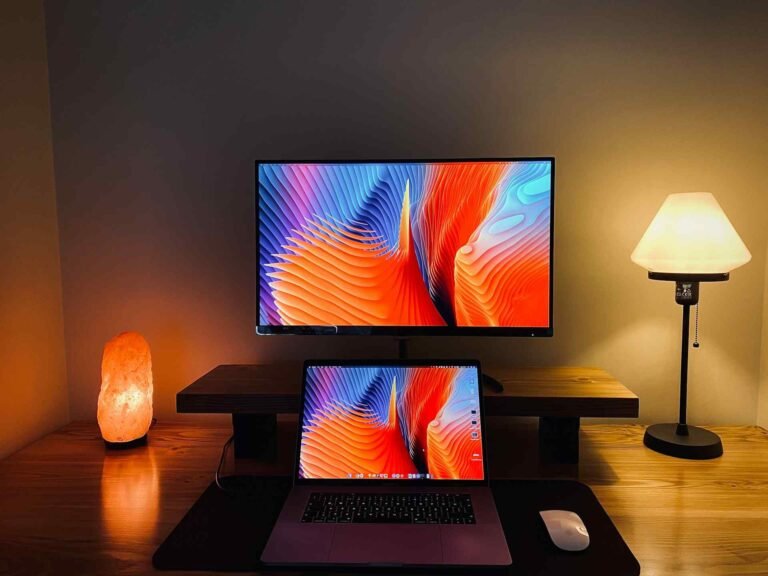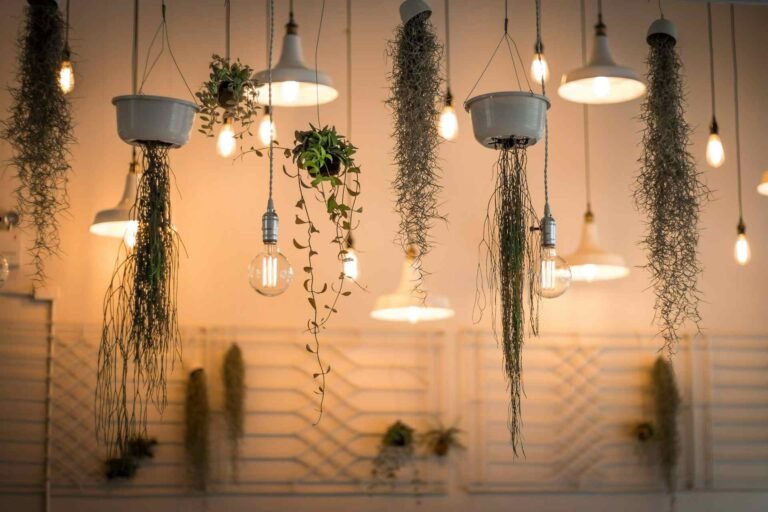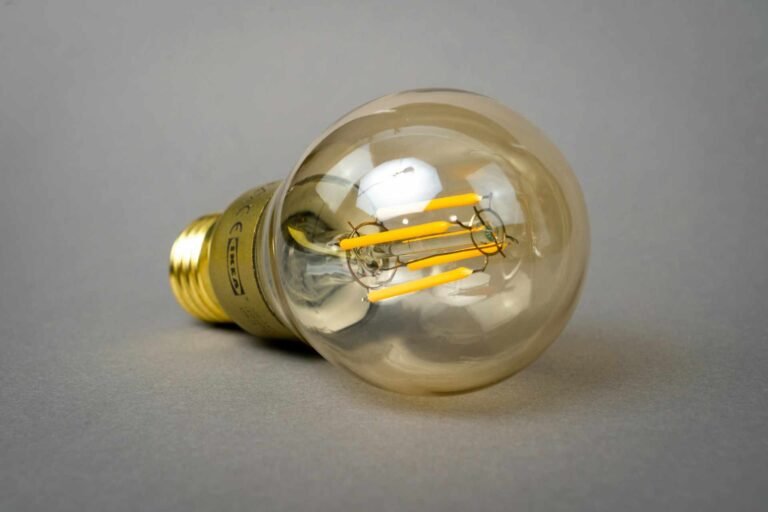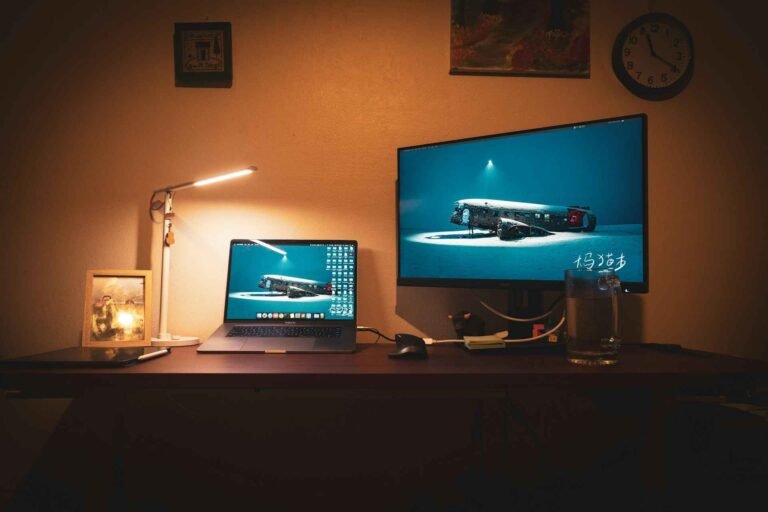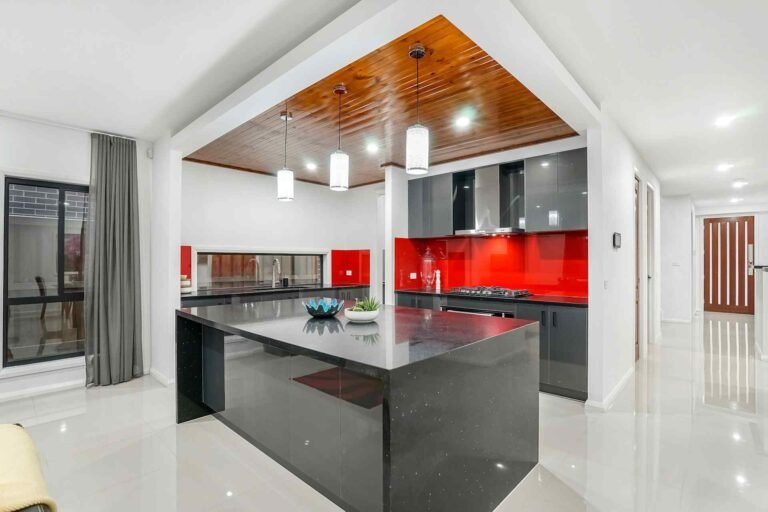How Many Lumens Do I Need for a Desk Lamp? The Complete Brightness Guide
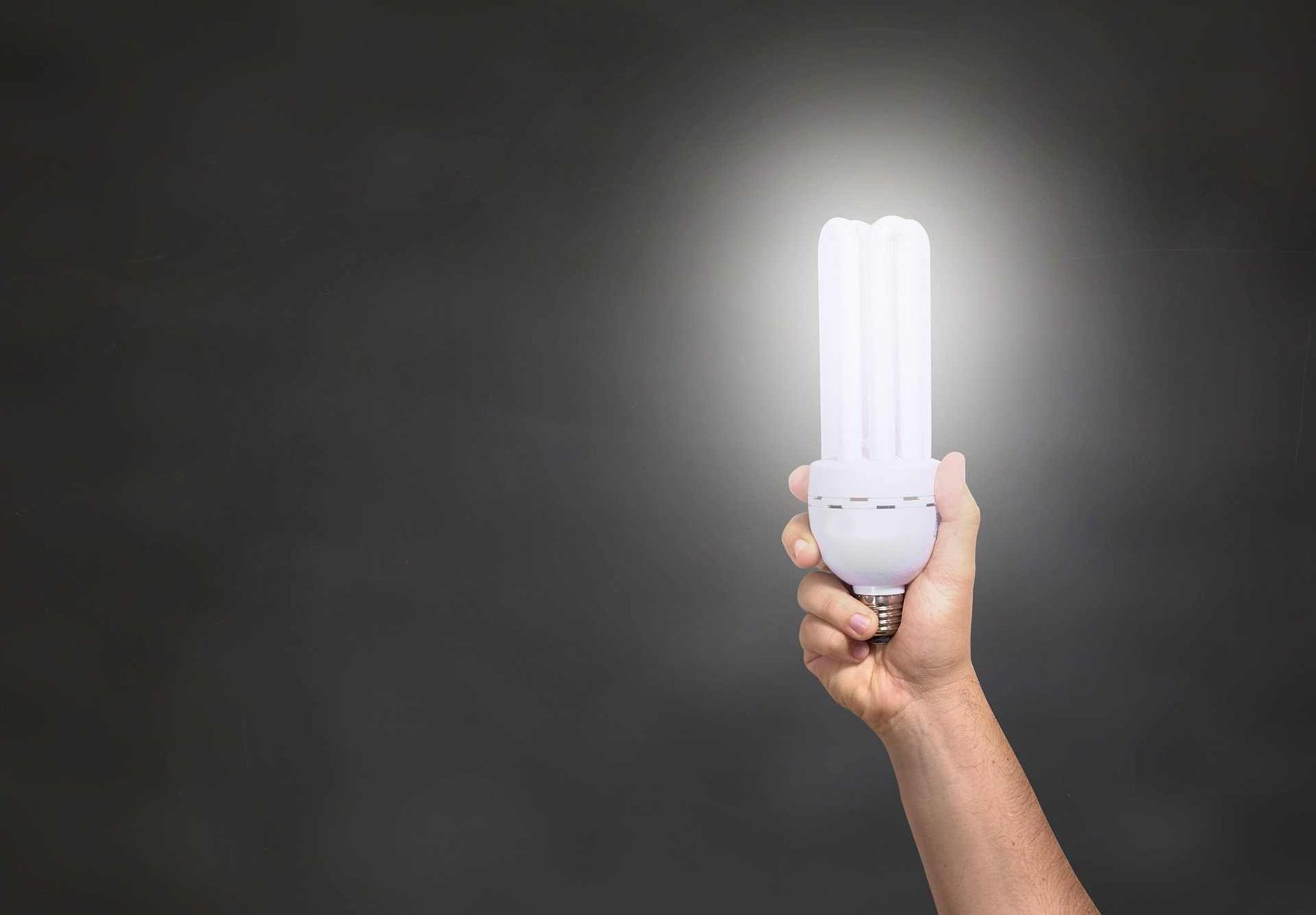
Ever squinted at your computer screen wondering why everything looks so dim, only to realize your desk lamp is about as bright as a birthday candle? Finding the perfect desk lamp brightness isn’t just about avoiding eye strain, it’s about creating a workspace that actually helps you get things done without feeling like you’re working in a cave or under interrogation lights.
The sweet spot for most desk work falls between 400-1000 lumens, but that’s just the beginning of the story. The right amount of light depends on what you’re doing, your age, the size of your workspace, and even the color of your desk surface. Let’s dive into everything you need to know about desk lamp brightness so you can finally stop playing guessing games with your lighting.
Understanding Lumens: The Real Measure of Brightness
Before we get into the nitty-gritty of how bright your desk lamp should be, let’s clear up what lumens actually mean. Lumens measure the total amount of visible light emitted by a source, think of it as the “light output” rather than the energy consumed. This is different from watts, which measure power consumption.
To put this in perspective, a standard 60-watt incandescent bulb produces about 800 lumens, while a 100-watt bulb cranks out around 1600 lumens. Modern LED bulbs can produce the same amount of light while using a fraction of the energy, which is why we focus on lumens rather than watts when talking about brightness.
The beauty of lumens is that it gives you a consistent way to compare different types of bulbs and lamps. Whether you’re looking at LED, halogen, or fluorescent options, lumens tell you exactly how much light you’re getting.
How Many Lumens Should a Desk Lamp Have?
The magic number for how many lumens you need for a desk lamp depends on your specific tasks and working conditions. Here’s a breakdown of different scenarios:
General Computer Work and Office Tasks
For typical office work like typing, emails, and general computer use, you’ll want a desk lamp that produces 400-600 lumens. This provides enough ambient light to reduce screen glare without overwhelming your eyes or competing with your monitor’s brightness.
Reading and Detailed Work
When you’re diving into documents, books, or doing detailed tasks that require focus, bump that number up to 600-1000 lumens. Reading requires more direct, focused light to prevent eye fatigue and maintain concentration over longer periods.
Creative and Precision Work
If you’re into drawing, crafting, jewelry making, or any precision work, you’ll want the higher end of the spectrum, 800-1200 lumens. These tasks demand excellent visibility to catch fine details and avoid mistakes that come from inadequate lighting.

The key is having adjustable brightness options. A good desk lamp should let you dial the lumens up or down depending on what you’re working on at any given moment.
Desk Lamp Brightness: Beyond Just the Numbers
Understanding how many lumens for a desk lamp goes beyond just picking a number and calling it a day. The effectiveness of your lighting depends on several factors that work together to create the perfect illuminated workspace.
Light Distribution and Positioning
A 500-lumen desk lamp positioned incorrectly can perform worse than a 300-lumen lamp in the right spot. The way light spreads across your work surface matters enormously. Look for lamps with adjustable heads that can direct light exactly where you need it.
Proper positioning techniques for maximum desk lighting efficiency can make a dramatic difference in how effectively your lumens translate to usable light. The angle, distance, and direction all play crucial roles in workspace illumination.
Color Temperature Considerations
Lumens tell you how much light you’re getting, but color temperature (measured in Kelvin) tells you what kind of light it is. For desk work, you typically want somewhere between 3000K-5000K. Lower temperatures (3000K) provide warm, cozy light that’s easy on the eyes for general tasks, while higher temperatures (4000K-5000K) offer crisp, focused light that’s ideal for detailed work.
The combination of the right lumens and the right color temperature creates a workspace that feels both comfortable and productive. Understanding the difference between cool light and warm light helps you make informed decisions about your desk lighting setup.

Task-Specific Lighting Requirements
Different activities have different lighting needs, and understanding these requirements helps you choose how many lumens your desk lamp should have for optimal performance.
Study and Learning Environments
Students and researchers need consistent, comfortable lighting that supports long study sessions. For study lamps, 600-800 lumens typically work well, providing enough brightness to read textbooks and take notes without causing eye fatigue during those marathon study sessions.
The placement becomes even more critical in study environments. You want to avoid shadows falling across your books or notebooks, which means positioning your light source correctly relative to your dominant hand.
Computer-Heavy Workspaces
If your work revolves around screens, you’re dealing with a balancing act. Too little ambient light creates harsh contrast between your bright screen and dark surroundings. Too much light creates glare and reflection issues. For computer work, start with 400-500 lumens and adjust based on your screen brightness and room lighting.
Modern USB-powered desk lighting solutions offer convenient brightness control that can adapt to your screen’s changing brightness throughout the day.
Multi-Purpose Workspaces
Many of us use our desks for everything from Zoom calls to crafting projects. For versatile spaces, you need a lamp that can handle different lumens requirements. Look for adjustable options that can go from 200 lumens for ambient evening work up to 1000+ lumens for detailed tasks.
Comparing Desk Lamp Options: Finding Your Perfect Match
| Lamp Type | Typical Lumen Range | Best For | Key Features |
|---|---|---|---|
| Basic LED Desk Lamp | 300-800 lumens | General office work, reading | Energy efficient, long-lasting |
| Adjustable Task Lamp | 400-1200 lumens | Varied tasks, precision work | Multiple brightness levels, flexible positioning |
| Architect/Swing Arm | 600-1600 lumens | Drafting, detailed work | Wide range of motion, focused beam |
| Clip-On Lamp | 200-500 lumens | Small spaces, temporary setups | Space-saving, portable |
| Smart Desk Lamp | 100-1500 lumens | Tech-savvy users | App control, scheduling, color changing |
Innovative clip-on LED lighting options provide flexibility for unconventional workspace setups while still delivering the lumens you need for productive work.
The beauty of having options is that you can match your lamp choice to both your space constraints and your lighting needs. A small apartment setup might benefit from a clip-on model, while a dedicated home office can accommodate a full-sized adjustable task lamp.
Factors That Influence Your Lumen Needs
Several personal and environmental factors affect how many lumens you actually need for comfortable desk work.
Age and Vision Considerations
As we age, our eyes need more light to see clearly. Someone in their 20s might be perfectly comfortable with 400 lumens for reading, while someone in their 50s might need 600-800 lumens for the same task. This isn’t a flaw, it’s just how our vision changes over time.
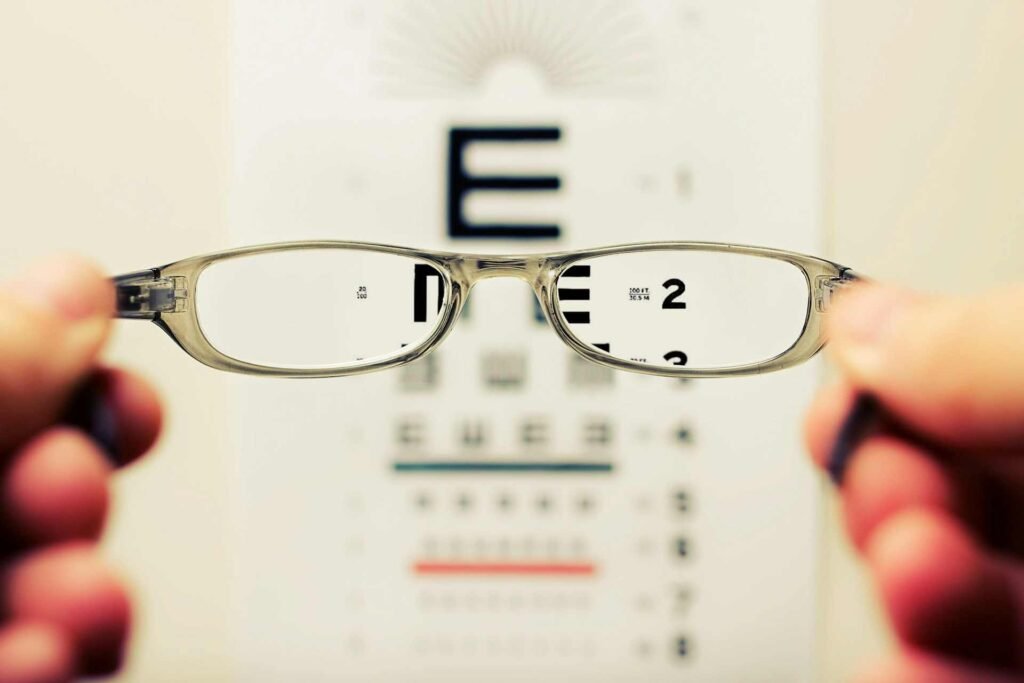
If you wear glasses or have specific vision requirements, you might find that you need slightly more lumens than the standard recommendations. The key is paying attention to your comfort level and adjusting accordingly.
Workspace Environment
Your surrounding environment dramatically impacts your lighting needs. A desk positioned near a bright window needs less artificial light during the day but might need more lumens in the evening. A desk in a basement office might need higher lumens consistently.
The color of your desk surface also matters. Light-colored desks reflect more light, making lower lumens more effective. Dark surfaces absorb light, requiring higher lumens to achieve the same level of workspace brightness.
Seasonal and Time-of-Day Variations
Your lighting needs change throughout the day and across seasons. During bright summer days, you might only need 300-400 lumens from your desk lamp. On overcast winter days or during evening work sessions, you might need 700-1000 lumens for the same comfort level.
Common Desk Lighting Mistakes to Avoid
Even with the right lumens, poor lighting choices can undermine your workspace comfort and productivity.
Over-Lighting and Under-Lighting
More isn’t always better when it comes to desk lighting. Cranking your lamp up to maximum brightness might seem like a good idea, but it can create harsh shadows, glare, and eye fatigue. Similarly, trying to save energy with too few lumens leads to squinting and strain.
The goal is balanced lighting that provides enough brightness for your tasks without overwhelming your visual system.
Ignoring Glare and Shadows
A perfectly bright lamp becomes useless if it creates glare on your computer screen or casts shadows across your work area. Consider how your lamp’s light interacts with other light sources in your room and position it to minimize these issues.
Neglecting Adjustability
Buying a fixed-brightness lamp is like buying shoes that only fit when you’re standing. Your lighting needs change throughout the day and across different tasks. Investing in adjustable brightness pays dividends in comfort and productivity.
Motion-sensing table lamp technology offers hands-free convenience while maintaining the flexibility to adjust brightness as needed.
Creating the Perfect Lighting Setup
The best desk lighting setup combines your primary desk lamp with other light sources to create a comfortable, productive environment.
Layered Lighting Approach
Professional lighting designers use a three-layer approach: ambient (general room lighting), task (your desk lamp), and accent lighting. Your desk lamp handles the task lighting, but having some ambient light in the room prevents harsh contrasts that can strain your eyes.
This doesn’t mean you need expensive lighting systems. Even a simple floor lamp providing soft background light can dramatically improve your workspace comfort when combined with proper desk lighting.
Integration with Existing Room Light
Your desk lamp doesn’t work in isolation. Consider how it interacts with overhead lights, natural light from windows, and other light sources in your space. Sometimes reducing overhead lighting and relying more on your desk lamp creates a more focused, comfortable work environment.
The key is finding the right balance where your total lighting (room + desk lamp) provides comfortable visibility without any harsh contrasts or dark spots.
Technology and Modern Desk Lighting
Today’s desk lamps offer features that make getting the right lumens easier and more convenient than ever.
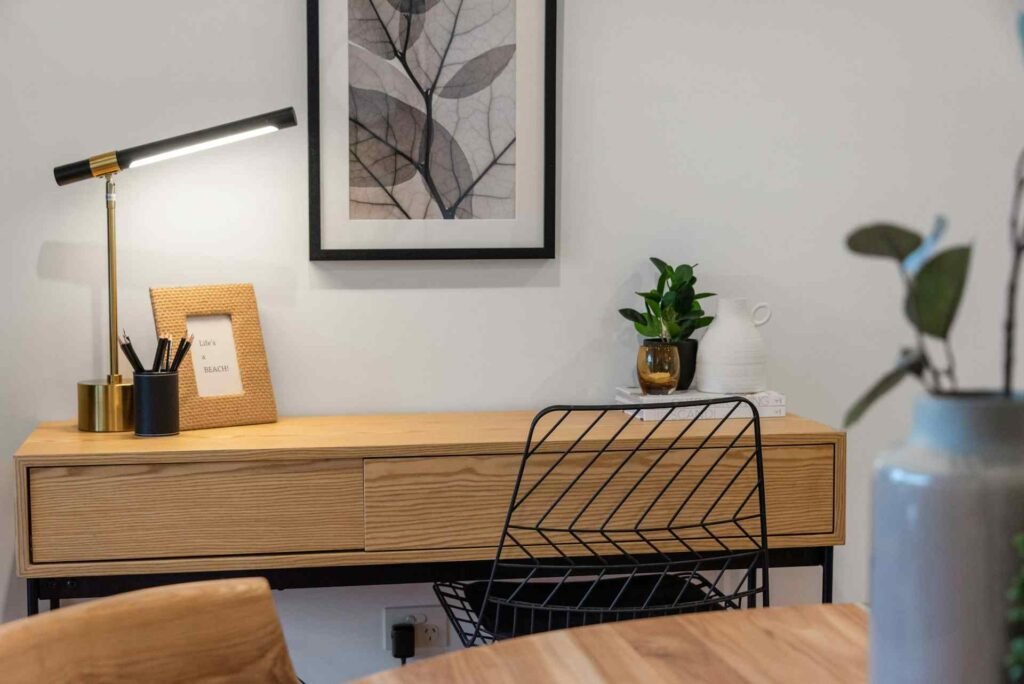
Smart Controls and Automation
Modern smart desk lamps can automatically adjust their brightness based on ambient light sensors, time of day, or your personal schedule. This takes the guesswork out of lumen management and ensures you always have appropriate lighting.
Some models even learn your preferences over time, gradually adjusting to provide optimal lighting for your specific work patterns and habits.
Energy Efficiency and LED Advantages
LED technology has revolutionized desk lighting by providing high lumens with minimal energy consumption and heat generation. A LED desk lamp producing 800 lumens might use only 8-12 watts of power, compared to 60+ watts for equivalent incandescent lighting.
This efficiency means you can afford to use higher lumens when needed without worrying about energy costs or excessive heat making your workspace uncomfortable.
Frequently Asked Questions
Is 1000 lumens too bright for a desk lamp?
1000 lumens isn’t too bright if you’re doing detailed work like reading small print, crafting, or precision tasks. However, for general computer work or casual reading, 1000 lumens might be more than necessary and could cause eye fatigue. The key is having adjustable brightness so you can dial down to 400-600 lumens for lighter tasks.
How do I know if my desk lamp is bright enough?
Your desk lamp is bright enough if you can comfortably see your work without squinting, leaning forward, or feeling eye strain after extended use. You shouldn’t see harsh shadows on your work surface, and text should be clearly visible without appearing washed out or dim. If you find yourself turning on additional lights or adjusting your position to see better, you likely need more lumens.
Can a desk lamp be too bright for computer work?
Absolutely. Too much brightness from your desk lamp can create glare on your computer screen and cause uncomfortable contrast between your bright desk area and your screen. For computer-focused work, 400-600 lumens usually provides the right balance. The lamp should complement your screen’s brightness, not compete with it.
Do I need different lumen levels for different times of day?
Yes, your lighting needs change throughout the day. During bright daylight hours, you might only need 300-500 lumens from your desk lamp since natural light provides ambient illumination. In the evening or on overcast days, you might need 600-800 lumens for the same comfort level. This is why adjustable brightness is so valuable.
How many lumens do I need for reading at my desk?
For comfortable reading at your desk, aim for 600-800 lumens focused on your reading material. This provides enough light to see text clearly without straining your eyes during longer reading sessions. If you’re reading very small print or detailed documents, you might benefit from up to 1000 lumens.
Should I choose warm or cool light for my desk lamp lumens?
The color temperature depends on your tasks and personal preference. Warm light (3000K) with 400-600 lumens creates a cozy atmosphere good for general tasks and evening work. Cool light (4000K-5000K) with similar lumens provides more alertness and focus, making it better for detailed work and daytime productivity. Many modern lamps offer adjustable color temperature along with adjustable brightness.
Conclusion
Start with the 400-1000 lumen range based on your primary tasks, then fine-tune from there. Remember that the “perfect” brightness changes throughout your day, across seasons, and as your needs evolve.
The real secret isn’t finding one magic number, it’s choosing a desk lamp that grows with you. Look for adjustable brightness, good positioning flexibility, and quality LED technology that’ll keep your workspace properly lit for years to come. Your eyes (and your productivity) will thank you for taking the time to get your lighting right.
After all, we spend way too much time at our desks to settle for lighting that makes us squint, strain, or feel like we’re working in a dungeon. With the right lumens lighting up your workspace, you’ll wonder how you ever managed with that sad little lamp that barely illuminated your keyboard. Here’s to brighter days (and better work) ahead!
Looking for more? Check out our desk lighting category for more articles and guides that may interest you!
Featured image credit: Image by Daniel Reche from Pixabay
This content is for informational purposes only. Please verify current information directly on the retailer’s site before purchasing.

